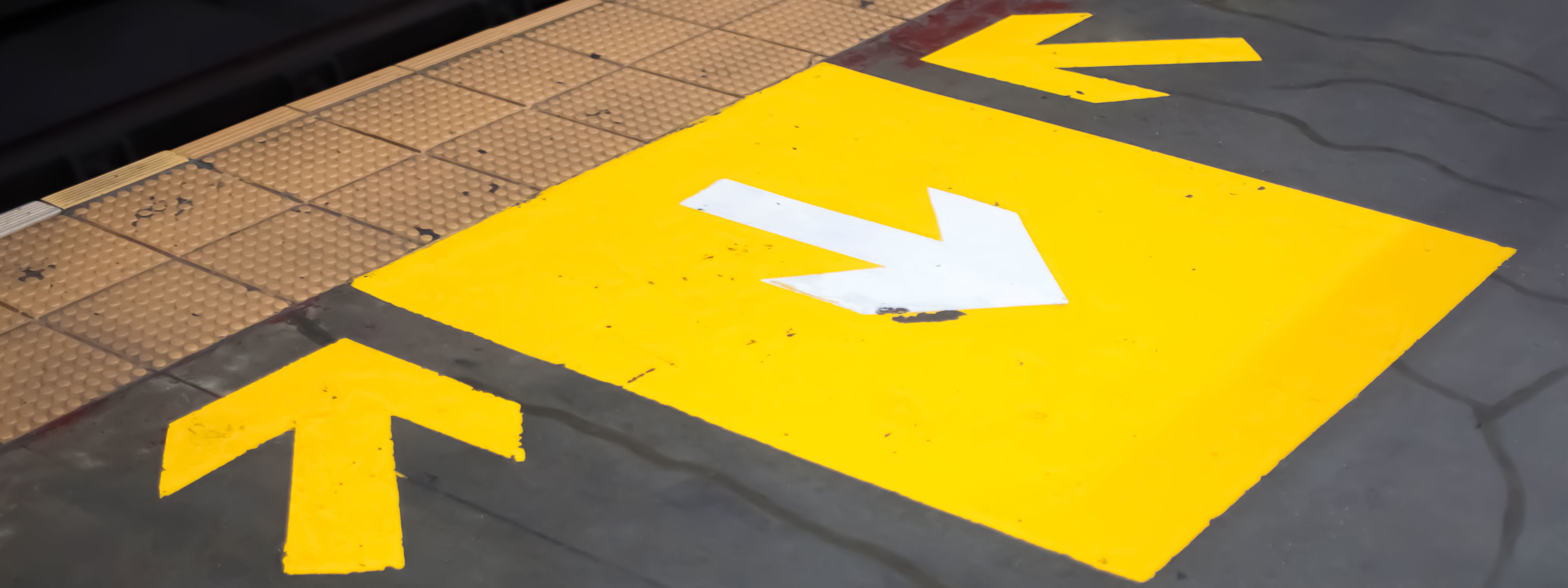
WROs, UFLPA and revised CTPAT
What importers need to know to comply with the US' growing arsenal of customs laws in the fight against forced labor
9 min read
The United States has added yet another customs tool in its ongoing work against forced labor in supply chains. Following on the heels of the Uyghur Forced Labor Prevention Act ("UFLPA") and an uptick in Withhold Release Orders ("WROs") related to forced labor, CBP has now revised the voluntary Customs Trade Partnership Against Terrorism ("CTPAT") Security and CTPAT Trade Compliance programs to include forced labor due diligence requirements. Although the CTPAT requirements apply only to CTPAT participants, their reach is not limited to a specific place of origin or entity in the supply chain, as are the reaches of UFLPA and WROs.
These developments are part of a growing trend to embed corporate responsibility, human rights and ESG principles into supply chains. While European countries have recently put forward supply chain legislation such as the EU's Corporate Sustainability Due Diligence Directive ("CSDDD") with a broad scope of human rights and environmental protections, the Biden-Harris Administration appears to be taking a more narrow approach prioritizing forced labor prevention. Its efforts to fight forced labor in the supply chain include the forthcoming US Trade Representative trade strategy to address forced labor, the revised US National Action Plan on Responsible Business Conduct, the US National Action Plan on Human Trafficking and the recently revised Department of Labor Bureau of International Labor Affairs ("ILAB") List.
Below, we summarize the compliance requirements and risks regarding WROs, UFLPA and CTPAT, including how compliance with one program might help overcome presumptions in another.
WRO/Findings Process
Before the United States enacted the Uyghur Forced Labor Prevention Act on December 23, 2021 ("UFLPA," Pub. L. 117-78, 135 Stat. 1525), Section 307 of the Tariff Act of 1930 already prohibited the importation of merchandise mined, manufactured or produced, wholly or in part, by forced labor, including convict labor, forced child labor and indentured labor (19 U.S.C. § 1307). Together with implementing regulations (19 C.F.R. §§ 12.42 through 12.45), the statute authorizes US Customs and Border Protection ("CBP") to issue a Withhold Release Order ("WRO") whenever information reasonably, but not conclusively, indicates that such goods are entering the United States. CBP initially detains, rather than seizes, shipments subject to a WRO. Within three months after receiving a notice of detention, importers then need either to prove admissibility or to export or destroy the goods, which CBP excludes from admission into US commerce. Proof of admissibility, in this instance, means proof that the producer or its suppliers used no forced labor to manufacture the goods, from raw materials to final assembly.
Upon sufficient adverse evidence (or insufficient favorable evidence), CBP can escalate the matter that the WRO began, publish a more formal Finding, and begin seizing imports. A seizure is a more severe consequence than a mere detention, because seizure can result in forfeiture. A WRO/Finding would stay in effect until revoked, and CBP could revoke or modify it only if evidence showed the subject goods were not made with forced labor; were no longer being produced with forced labor; or were no longer being, or likely to be, imported into the United States.
Recent WROs related to sugar and cotton products allegedly produced with forced labor have covered producers in the Dominican Republic and India.
UFLPA
Since June 21, 2022, the UFLPA has beefed up the US Government's enforcement mechanism, by requiring CBP to detain, and exclude or seize, a defined subset of China-related goods presumed to have been made wholly or in any part by forced labor. Specifically, 19 U.S.C. § 1307, as amended by the UFLPA, now requires CBP to presume that any goods—
- "mined, produced or manufactured wholly or in part" in the XUAR or
- "produced" by an entity on the UFLPA Entity List
Importers must either demonstrate: (1) that their goods are outside the UFLPA's scope, and therefore are not subject to the rebuttable presumption; or, alternatively (2) obtain an "exception" to the UFLPA exclusion by rebutting the presumption. To rebut the presumption, the importer must:
- present, within 30 days of any detention, "clear and convincing" evidence that the imported goods were not mined, produced, or manufactured wholly or in part by forced labor;
- have "completely and substantively responded" to all related requests for information from CBP; and
- have "fully complied with" CBP's Operational Guidance for Importers (June 13, 2022) ("CBP Operational Guidance") and the interagency Forced Labor Enforcement Task Force's Strategy to Prevent the Importation of Goods Mined, Produced, or Manufactured with Forced Labor in the People's Republic of China (June 17, 2022) ("FLETF Strategy").
The first of the three items above are the most difficult requirement for affected importers with complex supply chains to meet. The publications that the third item lists provide details about how to meet the first requirement, by exercising due diligence, including effective supply chain tracing and supply chain management practices.
As the CBP Operational Guidance and FLETF Strategy further explain, "clear and convincing" evidence that forced labor did not produce the goods might combine such items as:
- a supply chain "map" identifying all involved entities (and the specific locations of manufacturers, factories, farms and processing centers);
- pictures of living and working accommodations;
- information on "wage payment and production output per worker" covering all involved employees at each identified entity (presumably CBP wants primary accounting records that the foreign supplier maintains in the ordinary course of business, as opposed to secondary Excel-spreadsheets summarizing such accounting records);
- information on "worker recruitment and internal controls" to ensure that they all worked voluntarily; and
- "credible audits" (meaning recent, unannounced and performed by third parties).
Obtaining some of the above evidence from unrelated entities in foreign jurisdictions—as well as getting permission lawfully to share it with US governmental authorities—is not easy, even where CBP promises to preserve the confidentiality of proprietary documents and information. Accordingly, some importers with complex supply chains suspect it will be almost impossible to get a UFLPA exception for in-scope goods.
How do WROs/findings and UFLPA interact? First, the WRO/finding process will continue to affect imported goods for which the supply chain has no known nexus to the XUAR or a company on the UFLPA Entity List. Second, for goods with such a nexus, CBP has said: "Shipments imported prior to June 21, 2022 will be adjudicated through the WRO/Findings process. Shipments imported on or after June 21, 2022 that are subject to the UFLPA, which previously would have been subject to a XUAR WRO, will be processed under UFLPA procedures, and detained, excluded, or seized." (CBP Operational Guidance at 5).
CTPAT
In the latest development, CBP has revamped the voluntary CTPAT Security and CTPAT Trade Compliance programs to include forced labor requirements for participants in both programs. In exchange for heightened requirements, participants will receive certain benefits related to forced labor prevention enforcement. CBP announced the changes through its recently released revised handbook, which included forced labor related revisions for both CTPAT Security and CTPAT Trade Compliance.
The CTPAT program comprises public-private partnerships in which CBP affords certain benefits in exchange for voluntary self-monitoring and heightened diligence related to supply chain security and general regulatory requirements. (In March 2020, the former Importer-Self Assessment (ISA) Program was integrated into CTPAT as CTPAT Trade Compliance. CBP considers that the two programs together comprise the United States Authorized Economic Operator (AEO) Program—i.e., the US fulfillment of obligations arising from an international agreement to confer the same benefits on members of other countries' similar programs.) Participant benefits can include a reduced number of CBP examinations, front of the line inspections and shorter wait times at the border.
CTPAT Security Changes: Exporters and foreign manufacturers that are CTPAT Security participants will now be required to have a documented social compliance program in place that addresses how the company will ensure forced or child labor is not in its supply chain as of January 2023. Although CBP previously proposed the CTPAT Security social compliance program, it will now become mandatory. The relevant change can be found in section 3.9 of the Minimum Security Criteria. This is significant because the majority of CTPAT participants are only in CTPAT Security or are in both CTPAT Security and CTPAT Trade Compliance.
CTPAT Trade Compliance Changes: Participants in CTPAT Trade Compliance, however, have even more obligations. They are now required to:
- Implement a comprehensive system of internal controls for the prevention of forced labor in the supply chain with written documentation outlining these controls;
- Conduct Risk Based Business Mapping of supply chain partners that outlines the supply chains in their entirety that the importer feels pose the most risk for forced labor;
- Create a Code of Conduct statement that represents their position against the use of Forced Labor within any part of their supply chain. Partners must have policies and procedures in place that operationalize the Code of Conduct, as well as evidence of those policies' implementation;
- Provide training about the social compliance program required for CTPAT Security participants to their suppliers that identifies the specific risks and helps identify and prevent forced labor in the supply chain;
- Maintain a remediation plan in the event forced labor is identified in their supply chains, which must include a process for disclosing to CBP and outline the steps for the organization’s employees and suppliers must take to address the issue; and
- Share best practices with the CTPAT Trade Compliance program, as appropriate, to help mitigate the risk of forced labor.
In exchange for these new measures, CBP offers CTPAT Trade Compliance members three benefits related to forced labor compliance procedures:
- Front of the Line Admissibility Review: CTPAT Trade Compliance partners who have shipments detained due to forced labor will have their admissibility packages prioritized for review by the appropriate Center of Excellence and Expertise (Center);
- Redelivery Hold: CTPAT Trade Compliance partners who have shipments arrive at their facility that are later determined to be held due to ties to forced labor, where redelivery is normally requested, may hold the shipments at their facility, rather than redelivering the goods to CBP, until an admissibility determination is made or until a physical inspection is required; and
- Detained Withhold Release Order Shipments Move to Bonded Facility: CTPAT Trade Compliance partners that have a shipment detained by CBP due to a WRO will be allowed to move the goods to a bonded facility to be held until an admissibility determination is made by CBP.
How do WRO/Findings, UFLPA and CTPAT interact? The CTPAT forced labor prevention requirements are not so different from –and are likely less burdensome than– the evidence needed to defend against a WRO or to overcome the UFLPA presumption. Moreover, CTPAT members gain some procedural benefits in the event CBP detains their goods under a WRO.
White & Case means the international legal practice comprising White & Case LLP, a New York State registered limited liability partnership, White & Case LLP, a limited liability partnership incorporated under English law and all other affiliated partnerships, companies and entities.
This article is prepared for the general information of interested persons. It is not, and does not attempt to be, comprehensive in nature. Due to the general nature of its content, it should not be regarded as legal advice.
© 2023 White & Case LLP


